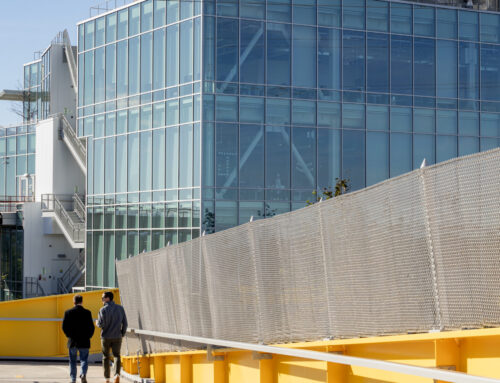Researchers race to climate-proof Christmas tree production: ‘We’re up to the task’
December 25, 2024
The climate crisis is increasingly affecting agriculture in the United States, including the production of Christmas trees.
Like all crops, Christmas trees are vulnerable to a changing climate, as the United States continues to experience warmer temperatures, more frequent and severe heat, increased rainfall, droughts, wildfires and hurricanes, as a result of global warming and the climate crisis – primarily driven by humans’ burning of fossil fuels.
A recent report from the National Centers for Environmental Information, which is part of the National Oceanic and Atmospheric Administration (NOAA), highlights how dire the climate crisis is and how it will continue to affect Christmas trees.
The report states that high temperatures and drought can stress Christmas trees, making them more vulnerable to pests and diseases, that excessive rainfall can cause flooding and root rot, and that extreme cold can cause frost damage, drying out buds and shoots.
In 2021, severe drought in Oregon led to the death of over 70% of Christmas tree seedlings in the state that year, the report states, due to extreme temperatures and very dry conditions that also completely dried out the needles of more mature trees.
Jill Sidebottom from the National Christmas Tree Association said that warmer temperatures can affect needle retention on Christmas trees, as they require cold temperatures to remain dormant. With warmer autumns, trees struggle to hold their needles longer.
“Those trees have to have cold temperatures,” she said.
Hurricane Helene in September caused catastrophic flooding and historic rainfall in North Carolina, leading to approximately $125m in losses of ornamental nurseries and Christmas trees, the report states.
In attempt to adapt to the increasing challenges posed by climate change, researchers across the country have been studying fraser firs and other varieties of Christmas trees to enhance their resilience to climate-related stresses.
Bill Lindberg, a Michigan State University Extension Christmas tree educator, noted that young trees face challenges during droughts. He said that through research, they’ve found that irrigation management and using wood chips to increase soil moisture can act as short-term solutions in Michigan.
Long-term efforts include exploring tree species that may thrive better in a warmer, drier climate, Lindberg said. Researchers are also conducting genetic research and breeding programs.
“Scientists are hoping to help the industry by producing Christmas trees that are able to acclimate and be more resilient to the threats of climate change,” the report from NOAA states.
The North Carolina State University Christmas tree genetics program has spent decades working to develop “elite” fraser fir trees capable of withstanding these climate-related impacts.
Justin Whitehill, the program lead, said that their primary focus is helping the trees adapt, so that they “continue to thrive and survive”.
This involves a traditional breeding approach, he said, which can be slow, as it can take 20 to 30 years for fraser firs to produce pollen or cones.
To accelerate the process, Whitehill said that they test the trees, and the existing genetics in various environments, “evaluating their performances based on how they perform at different elevations and how the genetics correlate with those different environments”.
“Instead of just letting the trees sort of figure it out on their own – which is the natural approach – we’re artificially helping the trees by identifying the ones that tend to do better in these newer climates and newer conditions, and try to push those forward to the next generation using somewhat advanced methods,” he said.
Genetic modification is another method being considered for adapting Christmas trees to the climate crisis, Whitehill said, but while it’s something they are considering and thinking about, they are still “pretty far off from that right now”, he said.
While the changing climate is posing challenges for the growth of Christmas trees, Whitehill stated: “We’re not at the point yet where the sky is falling.”
“Like any other crop we have out there, whether it be corn, soybean, any species really, there are challenges, and they are happening faster than what most of the species we work with can adapt with, but we’re up to the task,” he said.
“There are people working on it, we’re aware, and we’re going to have something to keep the industry solvent and happy moving forward so folks can continue to enjoy real trees for years to come.”
Search
RECENT PRESS RELEASES
Related Post




